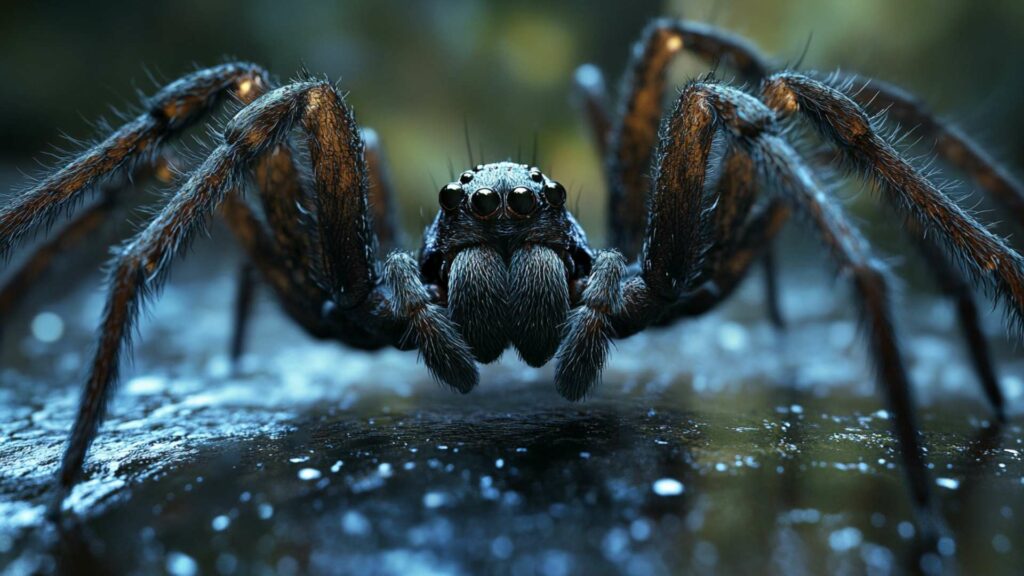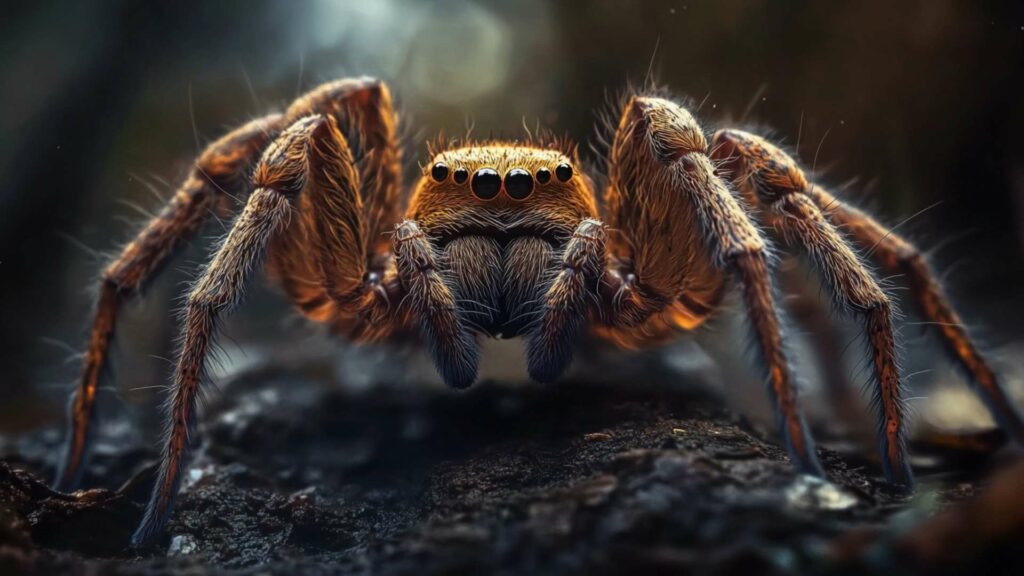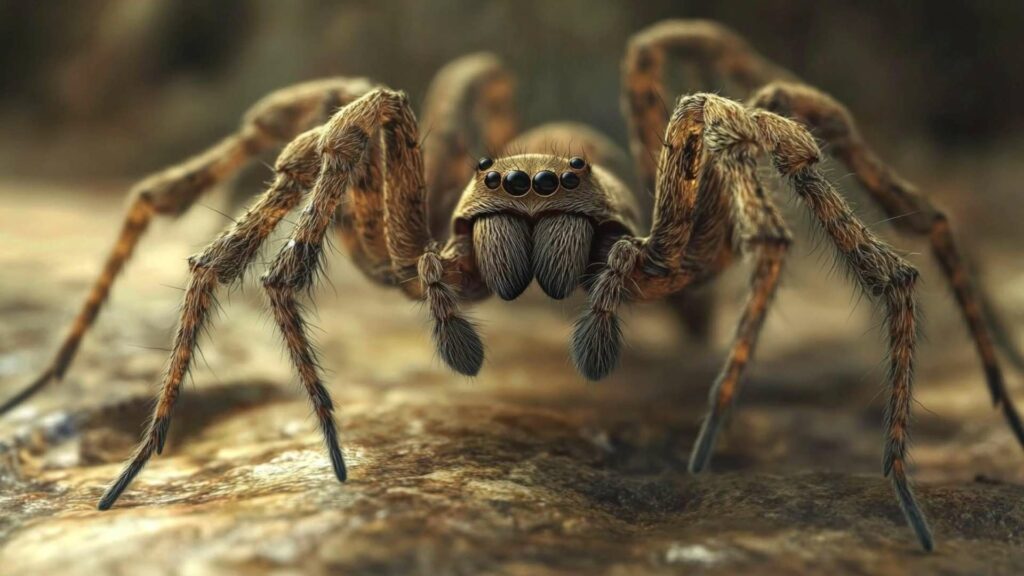Fascination with Spiders and their Eating Habits Spiders, with their intricate webs and mesmerizing movements, have long captivated human imagination. These eight-legged creatures are not only known for their ability to spin delicate silk threads but also for their unique eating habits.
Observing how spiders catch and consume prey has intrigued scientists, nature enthusiasts, and even the casual observer. From the way they skillfully trap insects in their meticulously crafted webs to the speed at which they immobilize them with venomous bites, spiders are truly fascinating predators of the natural world.
Introduction to Stink Bugs and Their Distinct Odor In a world teeming with diverse natural predators like wasps, birds, green lacewings, and even other insects themselves, stink bugs have managed to carve out a notorious reputation for themselves.
The brown marmorated stink bug (Halyomorpha halys), an invasive agricultural pest originating from East Asia but now found in various parts of North America including South Carolina’s warm climate, has become particularly notorious among homeowners. What sets these shield-shaped insects apart is not only their penchant for infesting homes during the spring and colder months but also the pungent odor they emit when threatened or disturbed.
When winter approaches and temperatures drop, stink bugs seek shelter inside houses or any protective structure they can find. As spring arrives, these crawling critters become increasingly active again in search of food sources outdoors – a time when encounters between spiders and stink bugs may reach new heights.
General Overview of What Spiders Eat

Spiders have a diverse diet that typically consists of insects and other small arthropods. They are skilled hunters that rely on their keen senses to detect potential prey. While the specific types of prey can vary depending on the spider species and its habitat, common food sources for spiders include flies, mosquitoes, moths, beetles, ants, and even other spiders.
Some larger spider species may also feed on small vertebrates like frogs or lizards if given the opportunity. However, the majority of spiders primarily feed on insects as their main food source for of sustenance.
Explanation of How Spiders Catch and Consume Prey
Spiders employ various techniques to catch their prey. One common approach is the construction of intricate webs that serve as traps.
These webs are designed to ensnare unsuspecting insects that unwittingly stumble into them while flying or crawling. Once trapped in the sticky strands, spiders use their agile legs to immobilize the caught creature by quickly wrapping it in silk for later consumption.
Not all spiders rely solely on webs; some are active hunters that chase down their prey instead. A notable example is the jumping spider, known for its incredible agility and ability to pounce upon unsuspecting bugs with lightning speed.
These hunting spiders have excellent eyesight and can detect motion from a considerable distance. When it comes to consuming their captured meal, spiders have specialized mouthparts called chelicerae that allow them to pierce through exoskeletons or tough shells.
Once punctured, they inject digestive enzymes into their prey’s body and suck out liquefied tissues—a rather gruesome but efficient method. Overall, whether through web-building or active hunting strategies, spiders demonstrate remarkable adaptability in capturing and consuming a wide range of insect prey—a skill set we’ll delve further into as we explore the interaction between spiders and stink bugs in subsequent sections of this article.
A brief introduction to stink bugs and their characteristics
Stink bugs, those little brown insects that seem to appear out of nowhere, have become quite familiar to homeowners and farmers alike. These shield-shaped pests belong to the insect family Pentatomidae and are known for their distinct odor, which they emit as a defense mechanism when threatened or squashed. The most common species of assassin bugs in North America is the brown marmorated stink bug (Halyomorpha halys), which has become a notorious agricultural pest.
Stink bugs are about three-quarters of an inch long, with mottled brown or greenish-brown bodies. Their piercing mouthparts allow them to feed on various plants, causing damage to crops and fruits.
Curiosity about whether spiders eat stink bugs
As we encounter these crawling creatures on our window screens or find them sneaking into our homes during cold weather, it’s natural to wonder if there are any predators out there that feast on stink bugs. Interestingly, despite being an agricultural pest with very few natural predators in North America, stink bugs do indeed fall victim to certain creatures in the animal kingdom.
Birds like starlings have been observed chowing down on these odorous insects, while some predatory insects such as green lacewings also make a meal out of them. However, one intriguing question remains: do spiders eat stink bugs?
Given spiders’ reputation as skilled hunters capable of catching other insects in their intricate webs or pouncing on them with lightning-fast movements using their eight legs, it’s worth exploring whether these arachnids include stink bugs in their menu. [Continuation of article]
Spider Species that Consume Stink Bugs
Garden Spiders (Araneus diadematus)

Garden spiders, scientifically known as Araneus diadematus, are fascinating creatures that thrive in various habitats including gardens and meadows. These spiders are renowned for their intricate orb webs, meticulously woven to catch unsuspecting prey. While their diet primarily consists of insects such as flies and beetles eggs, garden spiders have also been observed preying on larger organisms like stink bugs.
When it comes to hunting techniques, garden spiders patiently wait in the center of their web, detecting vibrations caused by an approaching insect. Once a potential meal is detected, they swiftly move to immobilize it using silk threads.
Their venomous bites not only paralyze the stink bugs but also begin the process of digestion. The preference of birds for larger prey, including stink bugs, can be attributed to the substantial nutritional value they provide.
Orb-weaving Spiders (Family Araneidae)

The family Araneidae comprises numerous orb-weaving spider species that boast intricate circular webs designed to ensnare passing insects. These remarkable web architects have gained attention for their ability to consume a wide variety of prey items – and yes, this includes stink bugs too!
Orb-weavers often build their webs in locations with high insect activity such as gardens or near light sources where flying insects congregate during nighttime. While they capture predominantly flying insects like moths and flies, there have been instances where orb-weaving spiders were observed catching stink bugs within their intricately woven traps.
Considering the abundance of stink bug populations in certain regions and the availability of suitable habitats for these spider species, it seems logical that some orb-weaving spiders would opportunistically include these agricultural pests in their diet. By preying on stink bugs, both garden spiders and orb-weaving spiders play a crucial role in maintaining natural balance and reducing stink bug populations.
This fact is particularly welcomed by homeowners and farmers who often struggle with the adverse effects of stink bug infestations on their crops and gardens. So, the next time you spot a spider in your garden, you might just have an ally in the fight against these pesky bugs!
Factors Influencing Spider-Stink Bug Interaction
Availability of stink bug populations in spider habitats
The availability of stink bug populations in spider habitats plays a crucial role in the interaction between spiders and these pungent insects. Stink bugs are known to be agricultural pests, often found in fields, gardens, and even invading homes.
Therefore, the presence of stink bugs in an area greatly influences whether spiders will encounter them as potential prey. Areas with high stink bug populations are more likely to attract spiders that feed on them.
Explanation of how environmental factors affect prey availability
Environmental factors such as temperature and humidity can significantly impact both the population size and distribution of stink bugs. These insects thrive in warm climates with abundant vegetation, making them more prevalent during certain seasons or regions.
Changes in weather patterns or ecological disruptions can influence their numbers as well. For instance, if a cold snap occurs or natural predators like assassin bugs, wasps, green lacewings, or damsel bugs keep their population under control, it may result in fewer stink bugs available for spiders to prey upon.
Impact on spider-stink bug interactions
The availability of adult stink bugs also directly affects the interaction dynamics between spiders and these odorous insects. When there is an abundance of adult stink bugs around, some spider species may specifically target them as a food source due to their size, nutritional value, or relatively slow locomotion compared to other insects. However, if the population decreases due to various environmental factors or pest control measures by homeowners (such as using window screens), spiders might have to switch their diet preferences accordingly.
Size and mobility of the stink bug as a potential deterrent for some spider species
Some spider species may find it challenging to capture and subdue larger or more mobile stink bugs. Spiders rely on their silk threads and hunting techniques to catch prey, and larger stink bugs may pose a greater physical challenge due to their size or evasive movements.
As a result, certain spider species might prefer smaller or less agile insects as they require less effort to catch and feed upon. However, this deterrent might not apply universally, as various spider adaptations play a significant role in overcoming such challenges.
Spider Adaptations for Consuming Stink Bugs

Sticky webs help trap the smelly insects
Spiders employ a variety of web designs to capture their prey, and sticky webs are particularly effective at trapping stink bugs. The adhesive properties of these webs allow spiders to ensnare the struggling insects, immobilizing them for subsequent consumption. This ensures that even if the stink bugs attempt to escape by flapping their wings or using their strong legs, they find themselves entangled in the spider’s intricate web.
Venomous bites immobilize the struggling prey
In addition to utilizing sticky webs, spiders possess venomous bites that serve multiple purposes during predation. When encountering stink bugs, spiders inject venom through their fangs into the captured prey.
This venom helps jumping spider immobilize and subdue the struggling insect by affecting its nervous system or disrupting vital bodily functions. By paralyzing the stink bug, spiders can consume it at their leisure without risking its escape.
Specialized mouthparts facilitate consumption despite the odor
Stink bugs are notorious for emitting an unpleasant odor when threatened or disturbed – a defense mechanism against potential predators like birds or reptiles. However, spiders have evolved specialized mouthparts that allow them to consume these odorous pests without being deterred by their smell.
These mouthparts are designed to extract nutrients from various types of prey while minimizing any direct exposure to the pungent compounds emitted by stink bugs. Thus, spiders can effectively feed on stink bugs without being repelled by their distinctive odor.
Lesser-known Facts about Spiders

– Spiders belong to the class Arachnida, which also includes scorpions, ticks, and mites. – Despite their often feared reputation, most spiders are harmless to humans and play a crucial role in controlling insect populations. – Spiders exist in an astounding variety of sizes, colors, and behaviors.
Some are as tiny as a pinhead while others can have a leg span of several inches. – There are roughly 48,000 known spider species worldwide; however, scientists believe there may be many more yet to be discovered.
– Spiders have remarkable adaptations for survival. They can spin silk webs of incredible strength and versatility and possess multiple pairs of eyes that contribute to their exceptional vision.
Conclusion
In the intricate world of nature’s predator-prey relationships, spiders occupy an important niche as efficient hunters capable of adapting to various circumstances. While some spider species do indeed prey on stink bugs when given the opportunity, their interactions depend on several factors such as the availability of stink bug populations in their habitats and the challenges posed by size or mobility. Regardless of these dynamics, it is fascinating to witness how spiders employ specialized adaptations like sticky webs, venomous bites, and efficient mouthparts to consume even odorous prey like the stink bug eggs and bugs.
So next time you come across a spider spinning its web or calmly waiting for its next meal – perhaps consider admiring its remarkable skills rather than fearing it outright. After all, these arachnids help maintain ecological balance by keeping pest populations in check while showcasing nature’s incredible diversity.
Defeat Spiders with D-Termination: The Leading Pest Control in Las Vegas!

If you’re worried about spiders in your Las Vegas property, D-Termination has the answer. Our team of experts is dedicated to eliminating spider infestations, ensuring that your space regains peace and tranquility. Say farewell to spiders—opt for D-Termination’s efficient pest control today!
Reach us at 702-919-6310 or visit dtermination.com to schedule your spider control service and take back your space from these unwelcome intruders.
Frequently Asked Questions:
Spined micrathena, orb-weaver, and jumping spiders eat stink bugs.
Certain spiders may find stink bugs suitable prey.
Spiders can catch and devour stink bugs.
Birds, insects like parasitic wasps, and some beetles eat stink bugs.








